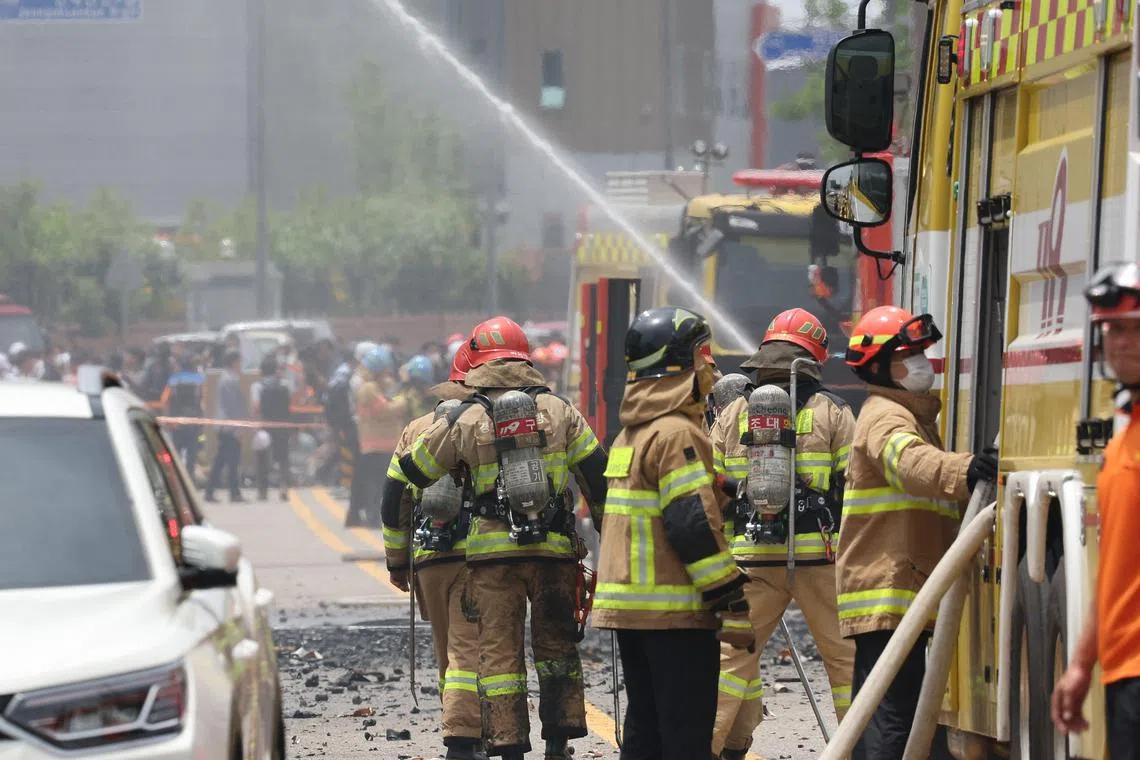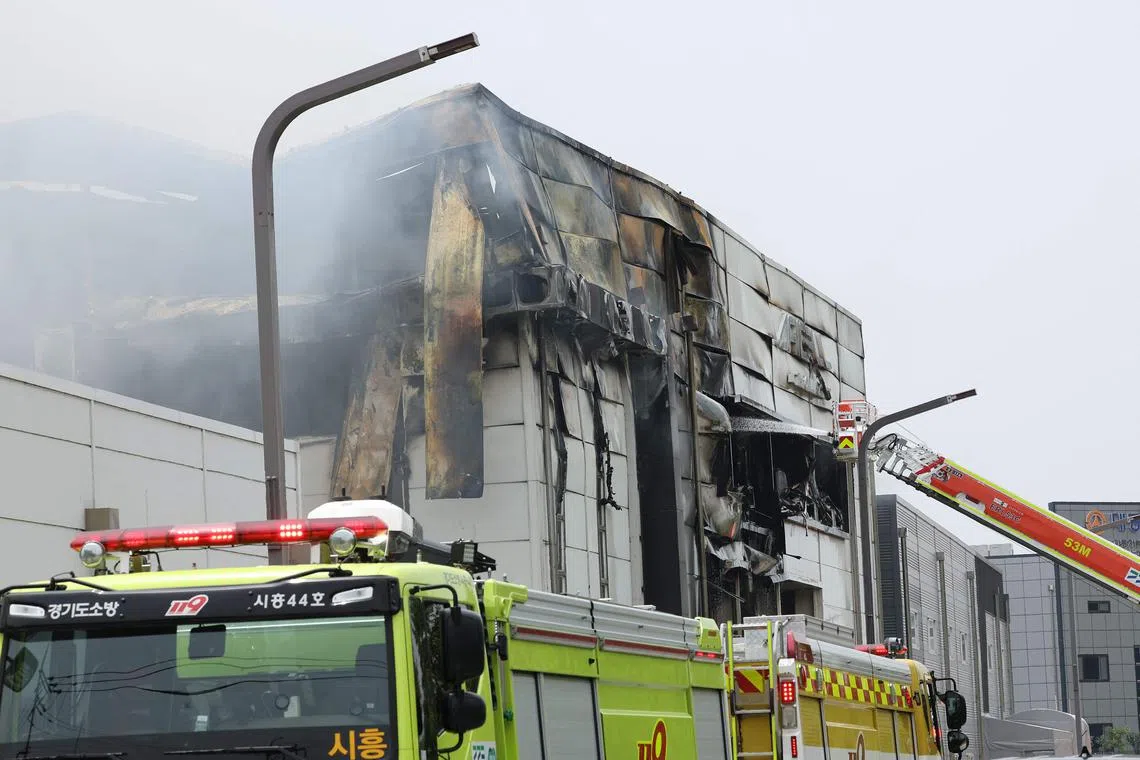18 Chinese among 22 dead in South Korea battery plant fire
Sign up now: Get ST's newsletters delivered to your inbox
Follow topic:
SEOUL - Twenty-two people were killed – including 18 Chinese nationals – in a massive fire at a South Korean lithium battery factory, the fire department said on June 24, one of the country’s worst factory disasters in years.
Over 100 people were working in the factory when workers heard a series of explosions from the second floor, where lithium-ion batteries are inspected and packaged, firefighter Kim Jin-young told the media. The plant is located in Hwaseong city, just south of the capital Seoul.
In the massive blaze that ensued, 22 people were killed, including 20 foreign nationals – 18 Chinese, one from Laos, and one of unknown nationality, he said.
“Most of the bodies are badly burned so it will take some time to identify each one,” he added.
Firefighters are still searching for one more person who remains unaccounted for, he said, adding that they had managed to contain the largest blaze at the plant and get inside.
Firefighters were “doing cooling operations to prevent the fire from expanding to nearby factories”, Mr Kim said.
Initial investigations indicate that the fire spread in a matter of seconds, with toxic fumes quickly overwhelming workers in the area, said Mr Cho Sun-ho, head of the Gyeonggi fire department.
“White smoke began to rise from a battery part, and it took only about 15 seconds to cover the entire space due to the sudden ignition,” he said, adding that as it was a lithium fire, the workers’ efforts to extinguish it would not have worked.
“It is presumed that the victims inhaled toxic fumes in a short time, which would have suffocated them quickly and made them lose consciousness.”
Dozens of fire trucks were lined up outside the factory, an AFP reporter saw, with rescue workers carrying bodies, covered by blue blankets, out of the building on stretchers.
Wearing a green jacket, which top officials don during emergencies, South Korea’s President Yoon Suk-yeol visited the disaster site late on June 24, walking around the charred building in a hard hat and face mask before greeting firefighters at the scene.
Mr Yoon said it appeared that “ignition material was positioned in front of the emergency exit, so workers could not escape and many people died”.
He ordered the authorities to check similar factories that handle chemicals and take “measures to prevent such accidents from happening again”.
The vast factory had an estimated 35,000 battery cells in storage on the second floor, with more batteries stored in other areas.
Lithium batteries burn hot and fast, and are difficult to control with conventional fire extinguishing methods.
“Due to fears of additional explosions, it was difficult to enter,” Mr Kim said. “As it is a lithium battery manufacturer, we determined that spraying water will not extinguish the fire, so we are currently using dry sand,” he added.
The lithium battery plant is owned by Aricell, a South Korean primary battery manufacturer. Shares of Aricell’s parent company, S-connect, plunged by over 20 per cent on the Seoul exchange by the close on June 24. S-connect owns 96 per cent of Aricell.
Lithium batteries are used in everything from laptops to electric vehicles – but can be highly explosive. Airlines, for example, impose strict regulations on checking devices containing them.

Around 20 bodies have been found at a South Korean lithium battery factory after a massive blaze on June 24.
PHOTO: AFP
‘Close windows’
Images shared by Yonhap after the fire broke out show huge plumes of billowing grey smoke rising into the sky above the factory, with orange flames inside the building.
The authorities in Hwaseong sent out a series of alerts to residents warning them to stay inside.
“There is a lot of smoke due to factory fires. Please pay attention to safety, such as refraining from going out,” one alert sent by text message said.
“Factory fire. Please detour to surrounding roads and nearby citizens please close windows,” another one read.

The lithium battery plant is owned by Aricell, a South Korean primary battery manufacturer.
PHOTO: AFP
South Korea is a major producer of batteries, including those used in electric vehicles (EVs).
Its battery makers supply EV makers around the world, including Tesla.
The fire is one of South Korea’s worst factory disasters in years.
Previously, its worst chemical plant accident was in 1989 at the Lucky Chemical factory in Yeosu, South Jeolla province, which resulted in 16 deaths and 17 injuries.
A fire at a warehouse in Icheon, Gyeonggi province, in 2020 killed 38 people. AFP

